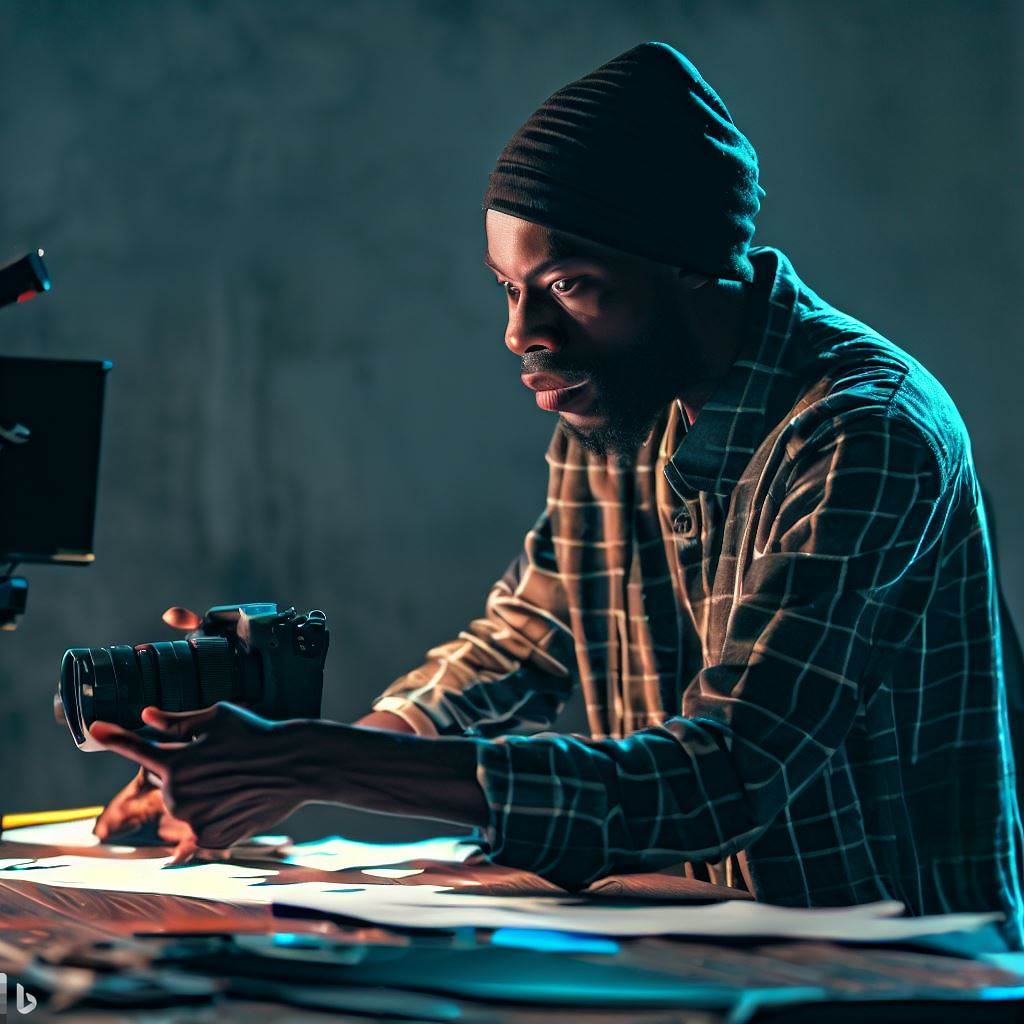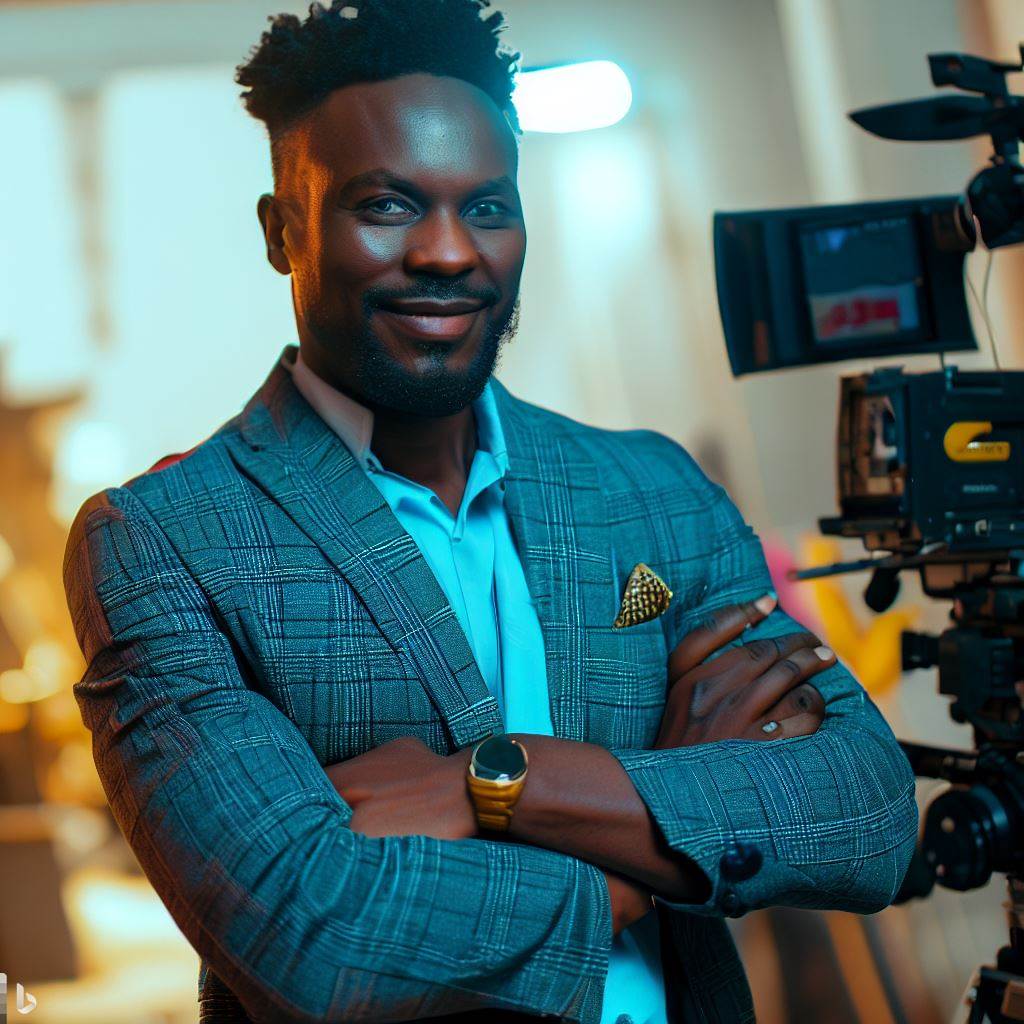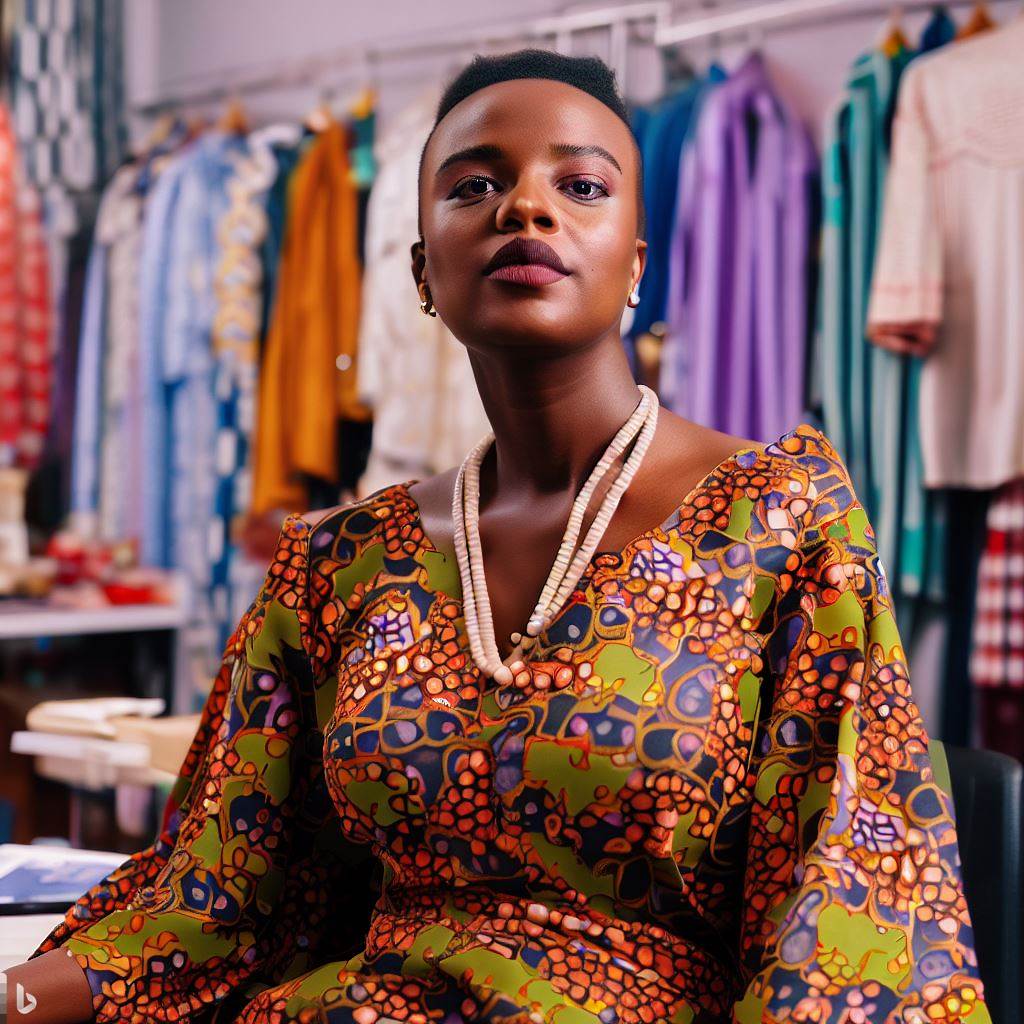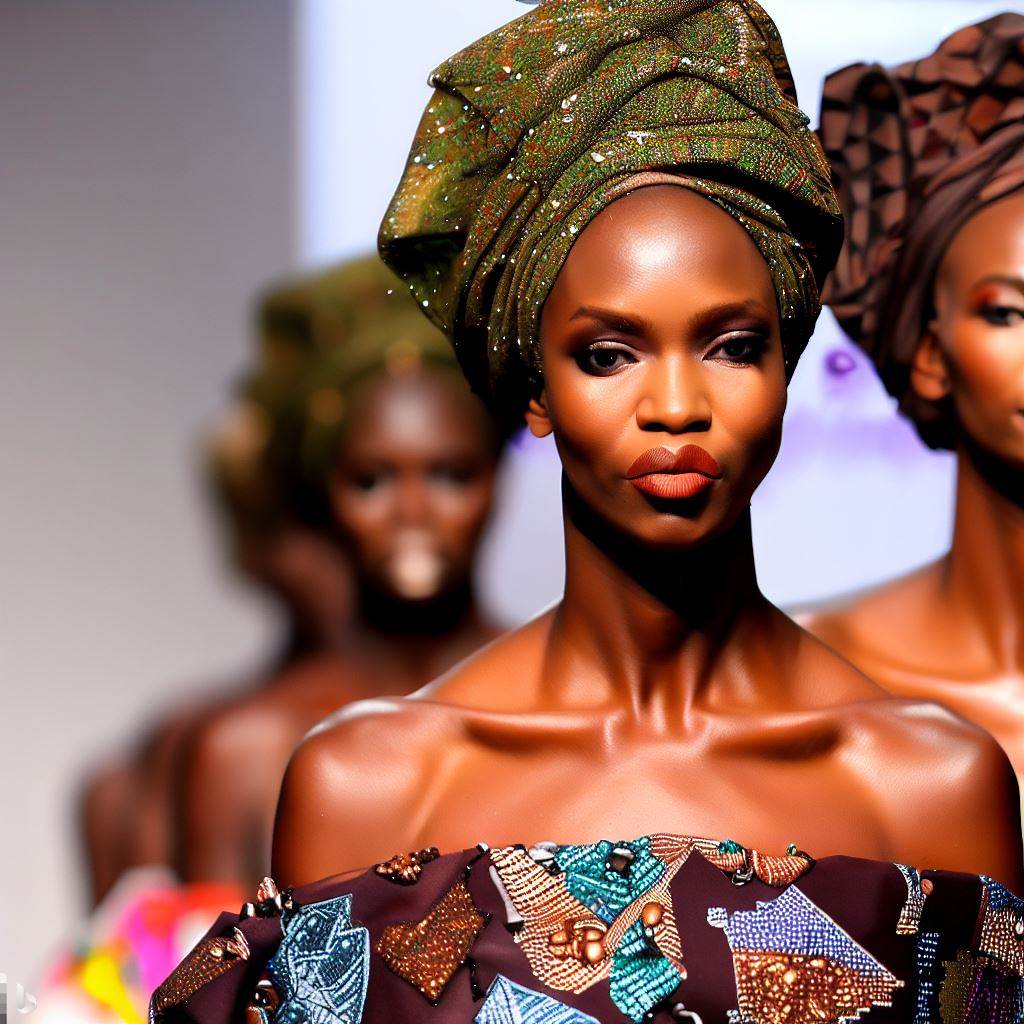Introduction
In the Nigerian film industry, a production designer plays a crucial role in creating visually captivating and authentic film sets.
The importance of production design cannot be overstated in filmmaking.
A production designer is responsible for the overall look and feel of a film.
They work closely with the director and other key team members to translate the script into visual elements.
Production design includes creating and overseeing the sets, costumes, props, and overall visual aesthetic.
The role of a production designer in the Nigerian film industry goes beyond just creating visually appealing sets.
They also ensure that the design elements align with the story, characters, and cultural context.
The production designer must have a keen eye for detail and be able to effectively communicate their vision to the team.
They need to stay updated with the latest trends and techniques in production design.
A skilled production designer can greatly enhance the storytelling aspect of a film.
The production design sets the tone and atmosphere for the audience, helping to immerse them in the narrative.
The use of color, texture, and composition can evoke specific emotions and enhance the overall cinematic experience.
Generally, the role of a production designer in the Nigerian film industry is vital in creating visually captivating and authentic sets that align with the story and enhance the overall cinematic experience.
Technical Skills
When it comes to being a production designer in Nigeria, there are several specific technical skills that are required to excel in this role.
First and foremost, proficiency in using design software is crucial.
A production designer must be well-versed in programs such as AutoCAD, SketchUp, or Adobe Creative Suite to create detailed plans and designs for sets and stages.
Additionally, a production designer must have knowledge of set construction and materials.
Understanding how to build and assemble sets using different materials is essential for creating the desired look and atmosphere for a production.
Another important technical skill for a production designer is an understanding of lighting techniques and color theory.
They must know how to effectively use lighting to enhance the mood and atmosphere of a scene, as well as have a grasp of color theory to create visually appealing designs.
In order to communicate their vision to the rest of the production team, a production designer must also possess the ability to create detailed sketches, storyboards, and mood boards.
These tools help to convey the desired aesthetic and overall vision for a production.
Familiarity with props selection and sourcing is another necessary skill for a production designer.
They must have an eye for detail and be able to choose appropriate props that align with the overall design concept, as well as the ability to source these items within budget and time constraints.
To summarize, a production designer in Nigeria must have proficiency in design software, knowledge of set construction and materials, understanding of lighting techniques and color theory, ability to create detailed sketches and storyboards, and familiarity with props selection and sourcing.
These technical skills are essential for creating visually stunning and cohesive designs for productions.
Read: Nigeria’s Production Design: Salaries and Benefits
Creativity
Creativity is a crucial skill for a production designer in Nigeria.
It is the ability to think outside the box and come up with unique ideas that sets apart a successful production designer from the rest.
In this blog section, we will emphasize the importance of creative thinking in production design, discuss how production designers in Nigeria are expected to bring unique ideas to each project, and explain how creativity helps in creating memorable and visually appealing sets.
- Emphasize the importance of creative thinking in production design: Creative thinking is essential for a production designer as it allows them to conceptualize and visualize the overall look and feel of a project.
Without creativity, designs may become stale and uninteresting, failing to capture the audience’s attention. - Discuss how production designers in Nigeria are expected to bring unique ideas to each project: In Nigeria’s vibrant and competitive film industry, production designers are expected to constantly come up with fresh and innovative ideas.
They need to adapt to various genres, cater to different audiences, and deliver one-of-a-kind designs that suit the project’s vision. - Explain how creativity helps in creating memorable and visually appealing sets: Creativity allows production designers to transform ordinary spaces into extraordinary sets.
They have the ability to manipulate colors, textures, and objects in a way that creates a captivating visual experience for the audience, making the sets memorable and visually appealing.
Here are some ways production designers can leverage their creativity
- Experiment with colors and textures: By skillfully combining different colors and textures, production designers can create visually striking sets that evoke specific emotions.
They must understand how different shades and materials interact to convey the desired mood and atmosphere. - Incorporate cultural elements: Nigeria is a culturally diverse country, and production designers can leverage this diversity to infuse unique cultural elements into their designs.
By incorporating traditional art, architecture, and fashion, they can create sets that reflect the richness and diversity of Nigerian culture. - Think outside the box: To bring out-of-the-box ideas to life, production designers need to push the boundaries of their imagination. They should be open to unconventional materials, designs, and techniques, breaking away from the norm to create truly innovative sets.
- Pay attention to details: Details play a crucial role in production design, and creative designers excel in paying attention to even the smallest of elements.
By meticulously selecting props, choosing appropriate lighting, and designing intricate set pieces, they can add depth and realism to the overall production. - Collaborate and share ideas: Creative thinking doesn’t happen in isolation.
Production designers should collaborate with directors, cinematographers, and other members of the production team to exchange ideas and explore different perspectives.
This collaborative process can spark new creative solutions and elevate the overall quality of the project.
Therefore, creativity is a vital skill for production designers in Nigeria.
It enables them to bring fresh and unique ideas to each project, resulting in visually appealing and memorable sets.
By experimenting, incorporating cultural elements, thinking outside the box, paying attention to details, and collaborating, production designers can harness their creativity to elevate the quality of Nigerian film productions.
Read: Top Production Design Schools in Nigeria Explored
Collaboration
Collaboration is an integral part of film production, requiring effective communication and coordination among various departments.
Production designers play a crucial role in this collaborative process, working closely with directors, producers, and other teams.
Through teamwork and collaboration, production designers bring the director’s vision to life through the art of production design.
Effective Communication and Collaboration
For a film to be successful, effective communication and collaboration are paramount.
The production designer needs to understand the director’s vision and translate it into tangible elements on-screen.
This requires clear, concise, and constant communication between the director and the production designer.
Additionally, the production designer must coordinate with other departments such as the art department, costume design, and cinematography.
Effective communication allows for a cohesive and unified approach to the film’s visuals and overall aesthetic.
The Role of Production Designers in Coordinating with Directors and Producers
Production designers act as the bridge between the director and the production team.
They work closely with the director to understand their vision and develop a comprehensive design plan.
Once the director’s vision is understood, the production designer collaborates with the producers to create a budget and schedule.
This involves coordinating with various departments to ensure that the design plan aligns with the overall production goals.
During pre-production, the production designer conducts research, creates sketches, and presents ideas to the director and producers.
This collaboration allows for adjustments and modifications to be made, ensuring that the final design reflects the director’s vision while staying within budget and schedule constraints.
Teamwork and Collaboration in Bringing the Director’s Vision to Life
Production design is a collaborative effort that requires teamwork between the production designer and other departments.
The production designer works closely with the art department to create sets, props, and visual elements that enhance the storytelling.
Collaboration with the costume design team ensures that the characters’ costumes complement the overall visual aesthetic and the director’s vision for the film.
The production designer also collaborates with the cinematography department to design lighting and camera angles that enhance the visual experience.
Moreover, teamwork and collaboration extend beyond the film’s production phase.
During post-production, the production designer works closely with the editing team and visual effects department to ensure a seamless integration of the production design into the final product.
In fact, successful film production requires effective communication and collaboration.
Production designers play a pivotal role in coordinating with directors, producers, and other departments to bring the director’s vision to life.
Through teamwork and collaboration, production designers ensure a cohesive visual experience that enhances the storytelling and captures the essence of the film.
Read: Becoming a Production Designer in Nigeria: A Guide

Adaptability
Adaptability is a crucial skill for production designers in Nigeria due to the dynamic nature of film production in the country.
Nigerian film industry, also known as Nollywood, is the second-largest film industry in the world in terms of the number of annual film productions.
Dynamic Nature of Film Production in Nigeria
In Nigeria, the film industry is constantly evolving and changing, with new trends, technologies, and production methods emerging regularly.
Production designers need to stay updated with these changes to remain relevant in the industry.
Additionally, Nigerian films cater to diverse audiences with varied tastes and preferences.
Different genres, such as romantic comedies, action thrillers, and historical dramas, are produced to appeal to a wide range of viewers.
Production designers must possess the ability to adapt their creative vision, set designs, and aesthetics according to the specific genre they are working on.
Not only do the genres vary, but production designers in Nigeria also need to adapt to different time periods within a film.
Historical dramas or period films require extensive research and attention to detail to accurately portray a specific era.
Production designers must have a keen understanding of historical contexts, architecture, fashion, and cultural nuances to create authentic sets and costumes.
Cultural context is another important aspect for production designers in Nigeria.
Nigeria is a culturally diverse country, with over 250 ethnic groups and multiple languages spoken.
Films often explore different cultural backgrounds, and production designers need to accurately represent these diverse cultures through their designs.
Working Under Tight Budgets and Time Constraints
A major challenge for production designers in Nigeria is working with limited budgets and strict time constraints.
The Nigerian film industry is known for its low-budget productions, and production designers must find creative ways to achieve high-quality set designs within these constraints.
Production designers often have to juggle multiple projects simultaneously, with overlapping production schedules.
This requires excellent time management skills and the ability to work under pressure to meet deadlines without compromising quality.
Adaptability also extends to resource management.
Production designers must be resourceful in finding cost-effective materials and props, as well as negotiating with vendors and suppliers to maximize the impact of their designs within the given budget.
In the end, adaptability is a critical skill for production designers in Nigeria.
The dynamic nature of film production, the need to work across different genres, time periods, and cultural contexts, as well as the challenges of tight budgets and time constraints, all require production designers to be flexible and versatile in their approach.
By embracing change and continuously updating their skills, production designers can thrive in the vibrant Nigerian film industry.
Read: Commercial Photography in Nigeria: Business Opportunities & Growth
Problem-Solving Skills
In the demanding profession of production design in Nigeria, designers face numerous challenges.
These challenges often require strong problem-solving skills to find creative solutions, especially with limited resources.
Let us explore some common production design problems and how they can be resolved effectively.
1. Limited budget
One of the biggest challenges in production design is working with a limited budget.
It requires innovative problem-solving skills to make the most of the available resources.
Designers must carefully prioritize their spending and find cost-effective alternatives without compromising the quality of the production.
Publish Your Professional Profile, Business or Brand
Showcase your expertise, gain trust, and boost visibility instantly on Professions.ng.
Publish NowFor example, instead of purchasing expensive props, designers can explore renting options or even repurposing existing items creatively.
They can also collaborate with local craftsmen or artists who offer affordable solutions to create unique set pieces.
By thinking outside the box, production designers can maximize the impact of their designs within budget constraints.
2. Tight deadlines
In the fast-paced world of Nigerian film production, tight deadlines are a common challenge for production designers.
They must be adept at finding quick solutions without compromising the quality and detailing of their designs.
One effective way to tackle tight deadlines is by focusing on efficient planning and organization.
Designers should create a detailed timeline for each project, breaking it down into smaller tasks with specific deadlines.
This allows them to manage their time effectively and avoid last-minute rushes.
Furthermore, effective communication and collaboration with other members of the production team, such as art directors and set builders, are essential.
By working together and sharing ideas, designers can streamline the production process and meet deadlines successfully.
3. Limited resources
In Nigeria, production designers often have to work with limited resources, including materials, equipment, and skilled personnel.
This requires them to be resourceful and find innovative ways to achieve the desired results.
Designers can overcome this challenge by building a network of local suppliers and artisans who can provide affordable alternatives.
They can also explore recycling or upcycling options by utilizing materials or props from previous productions.
Additionally, nurturing relationships with talented individuals within the local community can help bridge the skill gap and provide access to specialized expertise.
4. Adaptability to various genres
Another challenge for production designers in Nigeria is the need to adapt their skills and designs to various genres and storytelling styles.
They must possess a deep understanding of different genres, from contemporary dramas to historical epics, and be able to create visually appealing and authentic sets accordingly.
An effective approach to this challenge is continuous research and keeping up with industry trends.
Designers must study the cultural and historical nuances of each genre and collaborate closely with the director and cinematographer to ensure their designs align with the overall vision of the production.
Furthermore, staying updated with the latest techniques, technologies, and design trends can greatly enhance a production designer’s adaptability and ability to create captivating sets in any genre.
5. Resource allocation
Effective resource allocation is crucial for production designers in Nigeria, as they often have to work within limited means.
They must make thoughtful decisions when it comes to allocating resources, such as manpower, materials, and time.
Designers should carefully analyze the requirements of each project, considering both creative and practical aspects.
By understanding the core needs of the production, they can allocate resources efficiently, ensuring the smooth execution of their designs while optimizing the available resources.
Lastly, being a production designer in Nigeria requires excellent problem-solving skills.
From dealing with limited budgets and tight deadlines to working with limited resources and adapting to different genres, designers must overcome numerous challenges.
By employing creative problem-solving techniques and collaborating effectively with the production team and local communities, they can navigate these challenges and create stunning visual experiences for Nigerian audiences.
You Might Also Like: Eco-Friendly Design: A New Wave in Nigeria’s Interiors
Uncover the Details: The Impact of Globalization on Costume Design in Nigeria
Conclusion
The key skills required for a production designer in Nigeria include creativity, attention to detail, communication, problem-solving, and technical knowledge.
Production design plays a crucial role in the overall success of a film, as it sets the tone, enhances the storytelling, and creates a visually appealing experience for the audience.
Aspiring production designers should strive to develop and enhance their skills to thrive in the Nigerian film industry.
This can be done through continuous learning, practical experience, and networking with industry professionals.
By acquiring and honing the necessary skills, production designers can contribute significantly to the growth and advancement of the Nigerian film industry, adding their unique artistic touch to create captivating cinematic experiences.




